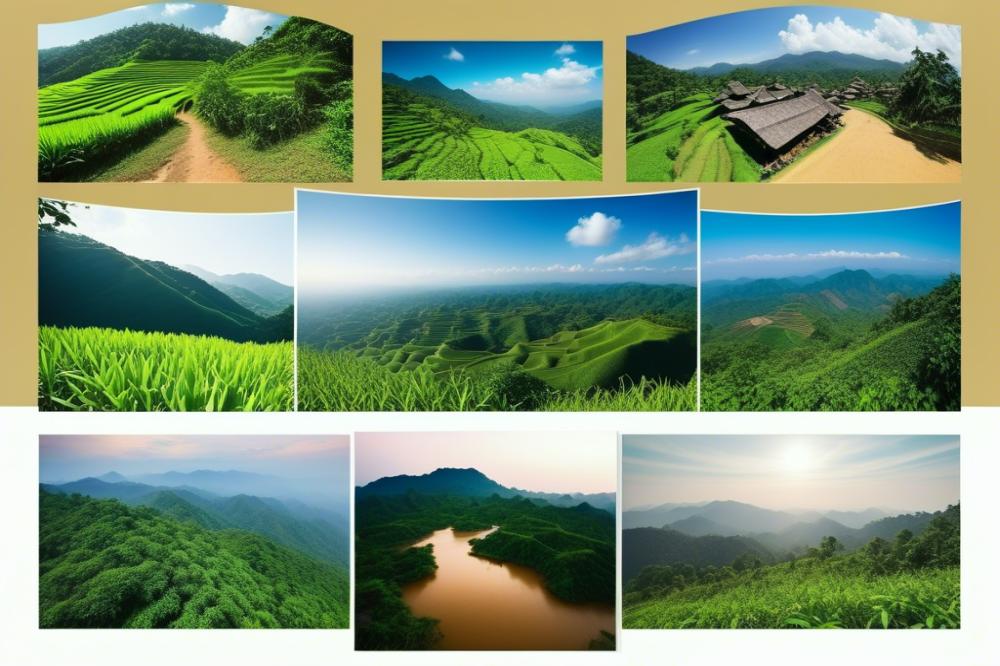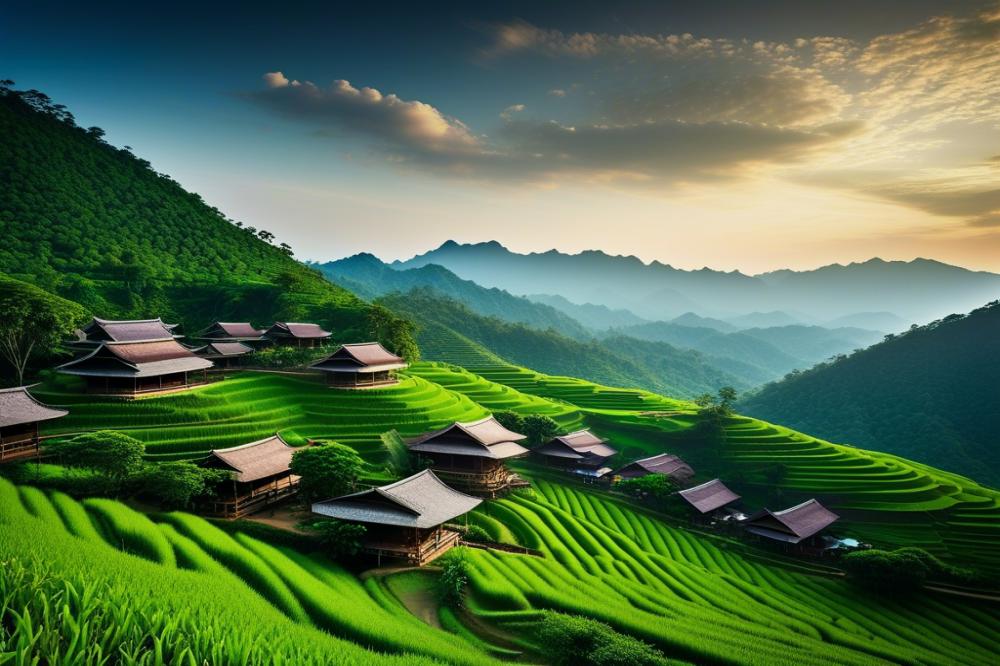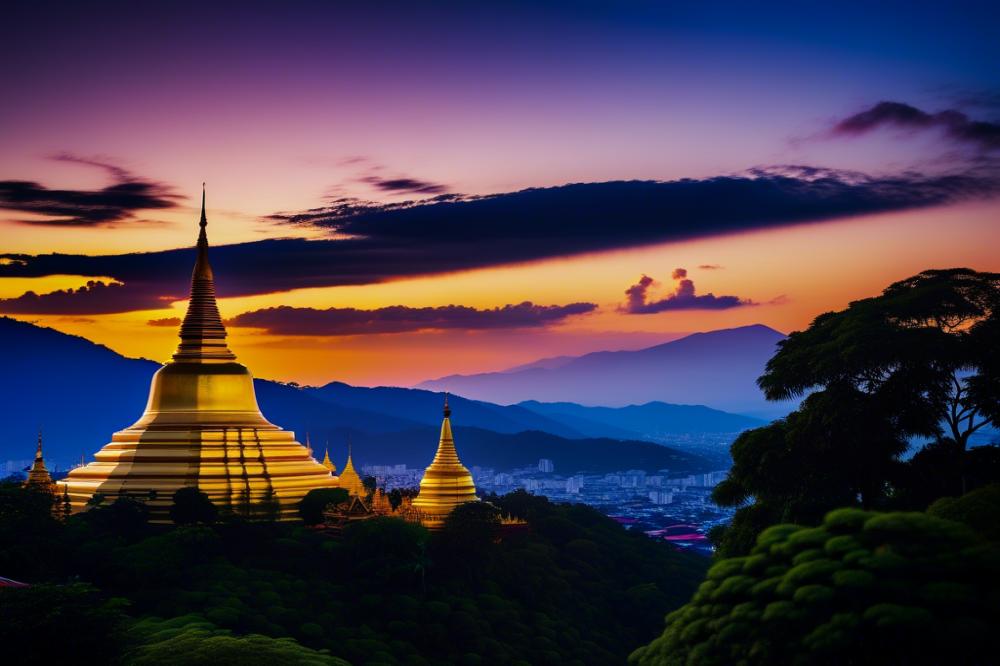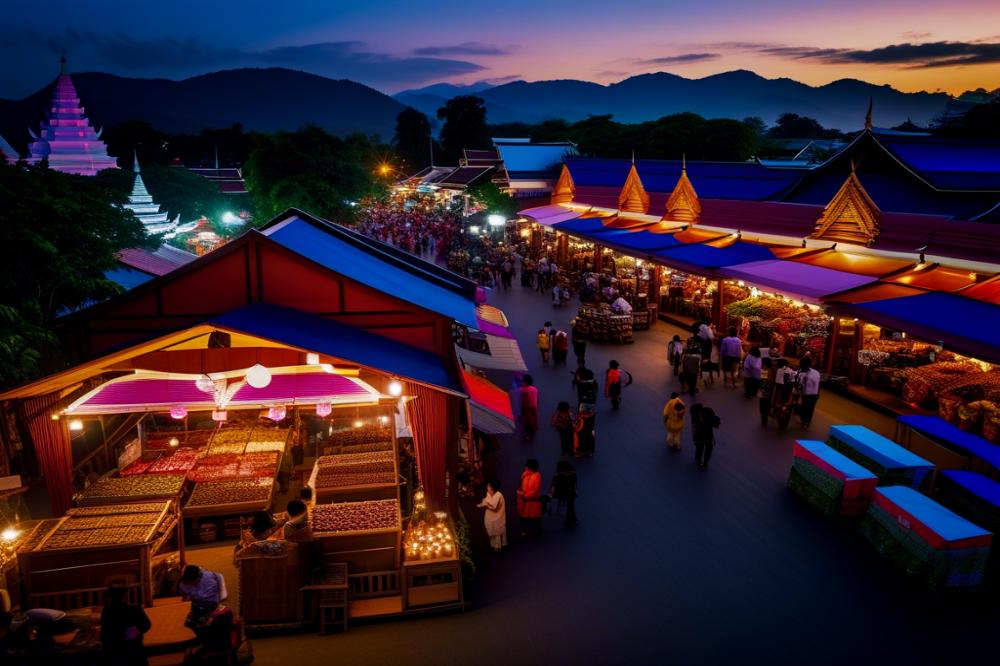Exploring Northern Thailand: A Trekking Paradise
Northern Thailand stands out as a captivating destination for Trekking enthusiasts. Its landscapes feature lush mountains, winding rivers, and dense forests. Many travelers flock to this region, attracted by its natural beauty and diverse culture. They seek both adventure and a chance to connect with local communities.
The area is rich with hill tribe culture that plays a significant role in shaping Thailand’s identity. Various ethnic groups call these mountains home, each with their own languages, traditions, and crafts. These communities invite visitors to experience their lifestyles, which change little from generation to generation. This interaction not only enriches the travel experience but also supports community tourism efforts.
Trekking routes weave through stunning scenery, offering access to remote villages. Many people choose to hike in the vicinity of Chiang Mai, where trails lead to immersive cultural experiences. Travelers can witness local artisans creating beautiful handicrafts. This setting allows visitors to appreciate traditional lifestyles in an authentic way.
The aim of this article is to delve into the Hill Tribes through trekking adventures. By uncovering the stories and practices of these communities, trekkers can gain deeper insights into the region’s diverse culture. Eco-tourism also plays an essential role, promoting sustainable practices that benefit both the environment and local residents. Prepare for an unforgettable journey into the heart of Northern Thailand.
Hill Tribes of Northern Thailand

Northern Thailand is home to several indigenous communities, often referred to as hill tribes. These groups play a vital role in preserving the region’s cultural richness. Their vibrant traditions attract travelers eager to learn more. Trekking routes through lush mountains lead to their villages, offering visitors an authentic glimpse into their world.
Major Hill Tribes
Four major groups stand out for their distinct lifestyles: the Karen, Hmong, Lahu, and Akha. Each tribe has its own unique customs, clothing, and social structures. Karen women are famous for their colorful weave and traditional long necks. Hmong communities are known for intricate embroidery and traditional farming practices. The Lahu tribe, like the others, also relies on agriculture but infuses their lives with music and dance as part of their identity. Meanwhile, the Akha are distinguished by their elaborate headgear and shamanistic beliefs.
Cultural Experiences and Traditional Lifestyles
Exploring hill tribe culture reveals much about their daily life. Many villagers engage in farming and crafting, using skills passed down through generations. Local artisans create beautiful handmade products, like textiles and jewelry, often sold to tourists. Living simply, these groups practice traditional customs that connect them deeply to their land. Festivals celebrate their heritage, inviting visitors to partake in the lively festivities.
Impact of Tourism
Tourism has brought both opportunities and challenges to these communities. Community tourism offers a chance for tribes to showcase their culture while gaining income. Eco-tourism emphasizes protecting the environment while providing cultural exchanges. However, there are concerns about the commercialization of traditions. Not everyone benefits equally from increased visitors. Striking a balance between authentic experiences and economic growth is crucial. Preservation of heritage needs priority as modernization creeps in.
Visiting these areas presents a chance to connect with genuine cultures. Responsible travelers should be mindful of their impact. Understanding the challenges faced by these communities enhances the trekking adventure in Northern Thailand.
Trekking Routes and Adventures

Overview of Popular Trekking Routes in Northern Thailand
Many travelers flock to Northern Thailand for its picturesque trekking routes. The region offers a vast network of trails that weave through stunning mountains and lush jungles. A popular starting point is Chiang Mai, where trekkers can easily access various paths that lead to breathtaking views and vibrant local cultures. Some routes are well-marked, while others take explorers off the beaten path, immersing them in authentic experiences.
Description of the Best Treks for Exploring Hill Tribe Villages
For those wanting to encounter hill tribe culture directly, the trek to Mae Hong Son is a must. This journey takes trekkers through stunning landscapes and remote villages. Traditional lifestyles can be observed here, as travelers meet local artisans and learn about their crafts. Another popular route leads to the villages around Pai, where you can discover the rich customs of the indigenous people.
Highlighting Key Trekking Adventures: Duration, Scenery, Difficulty
Trekking adventures vary significantly in duration and difficulty. Some shorter treks last just one or two days, perfect for beginners. The scenery ranges from rolling hills to dense forests teeming with wildlife. Longer treks can extend up to seven days, offering a more immersive experience. Experienced trekkers will appreciate the challenges these longer routes present. Each trek showcases beautiful vistas, rushing waterfalls, and tranquil rice paddies, captivating all who venture out.
Essential Tips for Trekking Enthusiasts
Trekking in Northern Thailand requires some preparation. Bring comfortable footwear and clothes suitable for varying weather. Hydration is key, so always carry enough water. Be respectful of local customs, especially when visiting villages. Engaging with the community enhances the cultural experience. Learning a few basic phrases in Thai can also go a long way. Always opt for eco-tourism options when available to support sustainable practices. With proper planning, trekkers can enjoy the best of what Northern Thailand has to offer.
Community Tourism and Cultural Experiences

Community tourism plays a significant role in promoting hill tribe culture in Northern Thailand. Visitors can explore this unique region through carefully planned trekking routes. Instead of just sightseeing, travelers actively engage with local communities. These interactions foster meaningful connections and understanding of traditional lifestyles.
Cultural experiences in these areas are rich and varied. Tourists might witness vibrant festivals or participate in traditional ceremonies. Local artisans often welcome visitors into their workshops, showcasing their crafts. Visitors can learn about intricate weaving or try their hand at creating beautiful textiles. These hands-on activities make the journey memorable.
Cooking classes also offer authentic glimpses into local cuisine. Guests can prepare meals using fresh ingredients from the community’s gardens. Experiencing local flavors creates an appreciation for the food and the cultural practices surrounding it. Visitors often find joy in sharing laughs and stories during these sessions.
Participating in these activities provides benefits beyond mere enjoyment. Engaging with artisans helps preserve valuable skills that might otherwise fade away. Local crafts and traditions face many challenges, especially from modernization. Supporting artisans reinforces the importance of their crafts and their stories.
Eco-tourism initiatives enhance this experience as well. Many of the trekking adventures emphasize sustainable practices. By respecting the environment and the people living in it, travelers become more aware of their impact. This connection with nature and community leaves a lasting impression.
In Chiang Mai and surrounding areas, community tourism thrives. The experiences offered invite a deeper understanding of the hill tribe culture. This dialogue between visitors and locals is beneficial for everyone involved. Travelers leave with valuable memories, while local communities gain support and appreciation.
Eco-Tourism and Sustainable Travel

Importance of eco-tourism in Northern Thailand
Eco-tourism plays a vital role in preserving the natural beauty of Northern Thailand. Travelers can explore stunning landscapes while helping protect delicate ecosystems. Communities benefit greatly when visitors opt for eco-friendly options. By choosing sustainable travel, trekkers support local efforts to conserve resources. This form of tourism encourages respect for the hill tribe culture and its traditions.
Promoting sustainable practices while trekking
Practicing sustainability means making thoughtful choices. Stick to marked trekking routes to minimize environmental impact. Carry reusable bottles to reduce plastic waste in nature. Travelers should also be mindful of their noise levels, allowing wildlife to thrive. Enjoying nature comes with responsibility; leave no trace behind to keep the area pristine.
How to contribute to local economies and conservation efforts
Engaging in community tourism can enrich the experience for everyone. Buying handmade crafts from local artisans boosts their economy and keeps traditions alive. Choosing to stay with local families contributes directly to their livelihood. Opting for guided tours led by community members helps ensure that a portion of the funds stays within the area. Conservation efforts rely on funds generated by responsible tourism, so every choice counts.
Encouraging responsible travel within hill tribe regions
Explorers should embrace cultural experiences with respect and understanding. Learning about traditional lifestyles helps foster appreciation for the hill tribes. It’s important to ask permission before taking photos of people. Always engage in open conversations about customs and practices, which fosters mutual respect. By being responsible travelers, visitors can leave a positive impact on Northern Thailand’s communities.
Chiang Mai as a Base for Trekking
Chiang Mai serves as a popular gateway to the beautiful trekking routes of Northern Thailand. This vibrant city is often the first stop for travelers eager to explore hill tribe culture. The lush mountains and small villages nearby make it the perfect launch point for adventures into the hills. Trekking through this region offers the chance to learn about traditional lifestyles and immerse oneself in local customs.
Best Local Tour Operators and Guides
Several local tour operators offer trekking adventures in and around Chiang Mai. Companies like Chiang Mai Trekking and Intrepid Travel provide guided tours that cater to various skill levels. Their knowledgeable guides share insights about the culture and environment. Many treks include visits to hill tribe villages, bringing you closer to the community tourism ethos of the area. Choosing a trusted guide can enhance your experience significantly.
Suggestions for Additional Activities and Exploration in Chiang Mai
Exploring Chiang Mai doesn’t have to end after trekking. Numerous activities await your discovery. Visit local artisans who create beautiful handicrafts and textiles. The city’s famous night markets offer a chance to sample delicious Thai cuisine while supporting small businesses. For those interested in nature, the nearby Doi Suthep-Pui National Park provides stunning views and hiking opportunities. Try a cooking class to learn how to prepare traditional dishes yourself.
Where to Stay: Accommodations Catering to Trekkers
Numerous accommodations in Chiang Mai suit trekkers’ needs. Hostels and guesthouses are often budget-friendly. They provide the opportunity to meet fellow travelers and share experiences. Some offer amenities like equipment rental and laundry services. If you prefer more comfort, boutique hotels and eco-tourism lodges are also available. These provide a mix of convenience and a connection to the lush surroundings, perfect for relaxing after a long trek.
Final Thoughts: Embracing the Adventure and Culture
Trekking through Northern Thailand offers an unforgettable experience. It allows visitors to explore the authenticity of hill tribe culture while navigating breathtaking landscapes. Each step taken on these trails reveals not only stunning vistas but also rich traditions preserved for generations. Interactions with local communities add depth to the journey. Travelers gain insights into a lifestyle remarkably different from their own.
Participating in community tourism serves as a meaningful way to engage with local lives. Tourists can contribute to the economy and support the preservation of age-old customs. Simply by purchasing handmade crafts or sharing meals with local families, individuals help maintain a way of life that is at risk from modern pressures. Every little action can have a ripple effect on sustaining these communities.
Responsible trekking is key to protecting these unique groups. It encourages visitors to walk lightly on the earth and respect cultural differences. Choice of tour providers is essential. Selecting those committed to ethical practices makes a significant difference. Respecting rules, customs, and the environment shows appreciation for these cultures. It is vital to leave a place better than it was found.
In closing, the journey through Thailand’s mountainous regions is more than just a hike. It presents a chance to connect with nature and people in a profound way. Encouragement goes out to all adventurers to take this path. Through such experiences, everyone can witness the resilience of hill tribes and participate in their stories. Together, let’s make every trek count.



